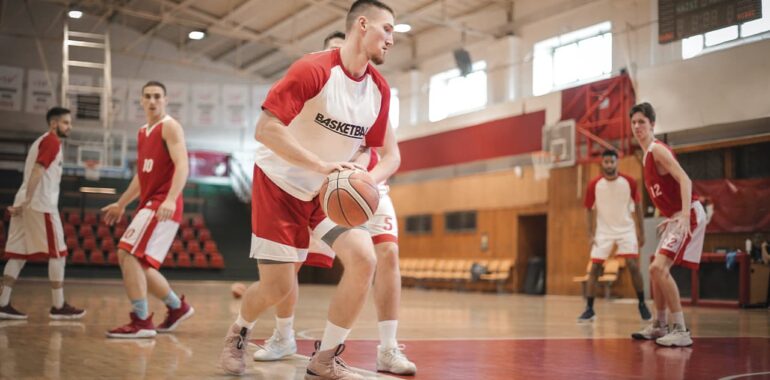Basketball techniques and tactics

Basketball techniques and tactics
The positions in modern basketball are offensive guard, point guard, light and heavy forward, and center forward. One of the most important players on the court is the point guard or playmaker. The name of this word comes from the English word “playmaker”, which means the one who makes the play or the conductor. Playmaker has the most control of the ball during the game, he leads the game of the whole team. He should see the court, dribble with precision and be able to make a good pass. Attacking guards usually start their team’s offense but also take part in the game and often finish the attack with long-range shots. The forwards usually run their offense from the edge of the court and the center forwards usually run their offense from close range. Center forwards are usually the tallest players on teams and their main job is to fight underneath their own and others’ boards.
Versatile players are especially valued these days and are able to play other positions when needed. A concept like “team player” is gaining in importance. Legendary center Bill Russell has become famous for his commitment to team play, winning 11 NBA championships with his club, the Boston Celtics. His regular rival from the Philadelphia Warriors, who was just as good as Russell but favored personal play over team play, and as a result only once managed to become an NBA champion.
The standard formation scheme is considered a 2-1-2. But during the course of the game the coach can change the usual tactical formation at any time. For example, he may put two or three centers on the court at the same time. After all, in the end the success of the team is determined by the right tactics, not just the individual skill of the field players.
There are two types of defense in the game of basketball: zone defense and personal defense. When zone defense is used, each player on a team is allowed to tackle any opponent in his allotted area. In personal defense, each player has guardianship of only “his” player. You get a big effect so-called pressing – a kind of active defense when an opponent is guarded not only near his own shield, but also on the far approaches to it, often all over the playing area. The main purpose of pressing is not to give an opponent quietly conduct the ball and organize the attack.
Underneath the basket is a special place during games. One of basketball’s precepts says “Whoever wins the board wins the game”, and therefore one of the main indicators of a basketball player’s game is the number of rebounds and blocked shots.
The individual prowess of most professional players is made up of many components. Dribbling, even without visual control of the ball, allows a player to instantly assess the changing game situation on the court. Various feints that provide an opportunity to mislead an opponent – deceptive movements with the ball, legs, arms, head and body turn, gaze, etc. Passing game. The so-called hidden pass is particularly valued when the ball is passed without looking at the player to whom it is addressed. Another tricky trick that a basketball expert can try is the backhand pass. A player holds the ball behind his back and then throws it over his partner’s head in an instant. Basketball throws are made on the move and from the floor. There are many of these throws: a hook shot where the player’s hand moves in a curve when he is standing sideways to the basket, a jump shot, a shot to the basket from above and so on. Also in basketball is very important, along with technique of possession, it is very important to be able to play correctly without the ball.
Before the introduction of offensive (time) limits, basketball was a rather slow game. This was also evidenced by the “microscopic” results of games played, very often the game did not go beyond 15-20 points on each side. Early and mid-century basketball was characterized by an unhurried style of play and a team’s success was largely determined by the individual skills of its leading players. Usually these were the tallest players. For a long time basketball as a game was considered solely a sport of taller players.
In the past, when the “3 second rule” was not yet in place, the game was often based on a simple tactical scheme – the tallest player on the attacking team would sit directly next to the opponent’s ring and, when he received a pass from his teammates and in almost all cases without problems sent the ball into the basket.